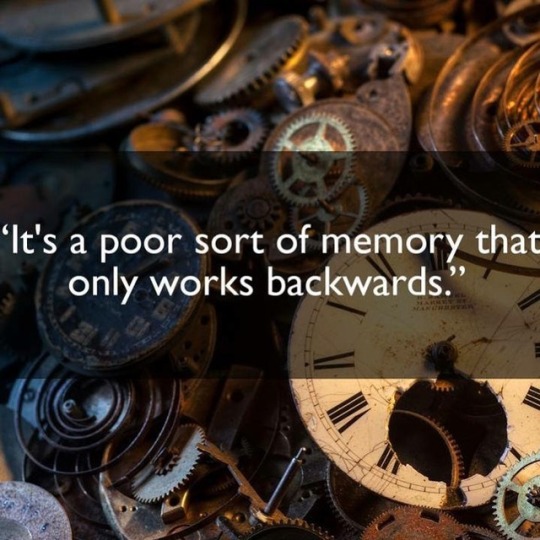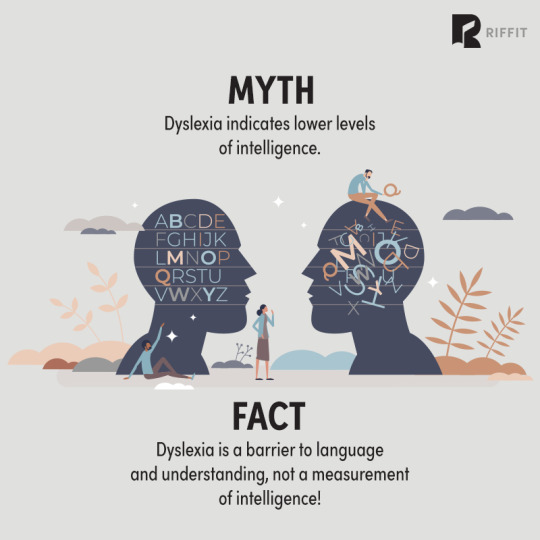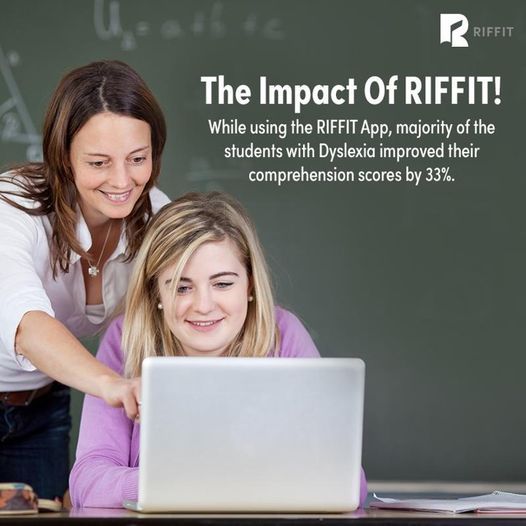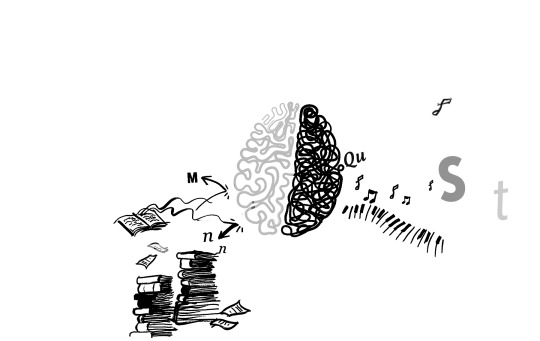#upgradeyourbrain
Explore tagged Tumblr posts
Link
A study by Cass Business School reports that 35% of US entrepreneurs identify themselves as dyslexic. Many believe it’s still an underestimated percentage.
And not just in the US - studies carried out in different corners of the world showed the same uncanny link between dyslexic people and successful businesses.

Ted Turner, media mogul; Henry Ford, successful carmaker; Ingvar Kamprad, Ikea Founder; Anita Roddick, Body Shop founder; and Tommy Hilfiger; Fashion Icon — these are just a few names of successful entrepreneurs that have founded an unfaltering legacy.

So, is it just a coincidence? Or, there is more to it than what meets the eye?
Is it because dyslexics learn strategies early on in their life to offset their weaknesses, or they’re good at identifying trustworthy people to delegate ‘responsibilities’?
There are many speculations and reasoning behind this unique connection.
Keep reading to find out!
Dyslexic People Think Differently
Studies after studies have shown that dyslexic people have strong imagining skills. If you’ve ever crossed paths with a dyslexic person, you’d know this is true in a heartbeat.
This is because dyslexic brains function differently.
The brain’s right hemisphere is active in dyslexic people, which is responsible for cognitive functions like emotions, attention, verbal ambiguity, and their meaning.
So, can you see the dots being connected? All of these functions mentioned above are imperative and common in successful entrepreneurs.
The increased capabilities in areas like visualization, logical reasoning, and natural entrepreneurial traits definitely bring a fresh and intuitive perspective.
In the regular school system, dyslexic kids are square pegs in a round hole. These creative minds are often chained by standardized tests created for standardized thinking.
But once they enter the world of business, they’re freed - at least to an extent - to think differently and do differently. Naturally, this gives them a competitive edge.
Their creative skills help them tackle old problems with new approaches. And being unconventional in the same-same marketplace definitely helps them disrupt industries sooner or later.
For example, Ted Turner’s CNN was the first news channel to broadcast news 24 hours a day! And rest is history.
Dyslexic People Keep It Simple
Owning a business means dealing with new complexities every other day. But once again, dyslexic minds have an edge. They’re absolutely brilliant at utilizing their amplified reasoning skills to look at the bigger picture and simplify problems.
In turn, this skill helps them to be bold (even eccentric sometimes), act fast, and capitalize on new opportunities. And as it goes without saying, simplifying things facilitates far better decision-making.
And we second that!
Dyslexic People Are Storytellers
As kids, dyslexic minds often try to offset their reading and writing difficulty by capitalizing on verbal communication. And this storytelling ability goes a long way in their adulthood.

Dyslexic people may find it hard to shuffle through mountains of paperwork. Still, they more than makeup for it by drafting clear messages that win over minds and hearts. They have a gifted ability to simplify the narrative and sell their vision.
Let’s look at an example of Ikea founder Ingvar Kamprad.
Kamprad started out with a small mail-order sales business where his products were labeled with individual codes.
However, like many dyslexics, he found it hard to memorize the numbers. So, he created a new system where he named all furniture with popular Swedish names, which later on went to become a renowned system all over the globe.
Also, don’t forget the special assembly instructions that come with Ikea furniture - they’re all pictures, not words.
And as you already know, people don’t just shop at Ikea for furniture - they do it for the unique assembling experience that comes with it.
Dyslexic People Are Curious
Dyslexics are by nature curious and passionate people - who channel these virtues into building unique, out-of-the-box businesses. They explore ideas in quirky, energetic, and constant ways.
And when it comes to offering an unparalleled customer experience, they don’t mind going the extra mile.
Dyslexic people are gifted with this unique ability to explore, visualize, and manifest outcomes. As a result, there will be several possibilities and perspectives in business.
They’re adept at imagining how situations can pan out, helping them detect gaps and opportunities most will miss out on.
Dyslexic people are also quite brilliant at visualizing products and services from different angles, which gives them quite the edge when it comes to designing new products, services, or improving the existing products in the market.
Dyslexic People Are Good At Socializing
Connecting with people is one of the most crucial assets dyslexics have. Their sheer ability to motivate and inspire sets them apart from other entrepreneurs. And this trait has sprouted from their strong connecting skills and enhanced emotional intelligence.
Their need to be aware of their Achilles heel and focusing on strength often makes them expert delegators, which in turn can help ignite the positive spark in others too.
By having this empathetic knowledge of weaknesses and strengths firsthand, they create fantastic, thriving teams.
And when communicating with customers and clients, their high level of emotional intelligence, coupled with empathy and passion, helps them unlock deeper levels of understanding on how to resonate with customers.
As a result, this helps companies create goods and services that resonate with the existing and prospective customers in the most impactful ways.
So, what does the future look like for dyslexic entrepreneurs? The past has shown that dyslexic people have quite substantially changed the world we live in with the correct opportunities and tools at hand. So we must support everyone with dyslexia to realize their worth and meet their potential. Let’s not forget to celebrate their imagination, curiosity, and empathy - skills imperative for future entrepreneurs.
#dyslexiaawareness#dyslexia#learningdisability#neurodivergent#neurodiversity#texttosong#changetheworld#learning#learningsupport#music#musictherapy#musicaltherapy#teachingkids#upgradeyourbrain#inspiration#overcomechallenges#dating app#appdownload
2 notes
·
View notes
Photo

Human brains are incredible and astounding, and the most powerful computer is no match for their complexity, space, and connectivity. They can reach back to a forgotten event just from a particular smell or sound, and evoke images, emotions, and people in the blink of an eye. They never stop working... sorting, arranging, storing and discarding, as well as sending out messages to all the systems of the body to keep everything in its healthiest state, and safe. Memory is one of its talents and we are constantly retrieving ideas, dreams, and appointments for immediate attention. But it has another talents - future memory. Once you switch this on, you can strengthen anything that you want to achieve. Imagine something that you are planning, and instead of letting any doubts creep in, visualise it as already having been done, and done excellently... nothing was left out, and the feedback was tremendous. Imagine your feelings after that, and how it opened up so many doors. Then congratulate yourself out loud - "I made a positive impact" "I am capable of anything" "I have all the skills to become better and better at what I love doing" Remember these words when you actually take the action, and feel how your confidence and clarity have grown to fit and further your dream. #superhumaninbali ##imagination #brain #upgradeyourbrain #brainschange #whollyshift #nolimits #memory https://www.facebook.com/BarbaraRuthHames/posts/2090055481036649
0 notes
Link
RIFFIT was brought into this world with the vision to change the lives of dyslexic minds forever - one song at a time. And it's been doing precisely that. Helping young minds without any boundaries - physical or financial - unleash the true potential of their mind that's long been chained by the limitations of our mainstream educational systems. Last month, we put our RIFFIT app to the test.

Ms. Lisa Hecker, a speech-language pathologist from New York, analyzed and scrutinized to find out whether RIFFIT is truly as remarkable and groundbreaking as it claims or is it just another marketing gimmick exploiting neurodiversity for private gains. Ms. Hecker used RIFFIT with her dyslexic young clients, and she has quite a lot to share with you guys.
But first, let me properly introduce you to Ms. Hecker.
Ms. Hecker is a speech and language pathologist who assesses and treats clients with language delays, hearing loss, neurologic injury, auditory processing disorder, feeding difficulties just to name a few. So, without further ado, let's dive into what Ms. Hecker really thinks of the RIFFIT App.
Is RIFFIT a game-changer?
The market's saturated with tools and strategies that claim to help individuals with learning differentiation. But how impactful are they? Are they based on scientific grounds? How do you differentiate the real deal from a fad?
Ms. Hecker strongly believes RIFFIT will be a really helpful app for children with dyslexia and other learning disabilities. In a toolbox of approaches designed to help dyslexic children learn, Ms. Hecker believes RIFFIT will be a crucial tool that will have a 'great impact.' And it is indeed. With RIFFIT, musical therapy is no longer limited to the reach of few who can afford specialized and often expensive classes. There's no linguistic, physical, or financial boundary that's separating a person in need from this quite life-changing tool.
Ms. Hecker also shared what she particularly likes about this app - its multimodality approach towards learning. There is an auditory component, a musical component, and a child's active participation.
"They are actively reading while receiving the feedback from the auditory output as well” Hecker claims. “I do think this app's going to be helpful for kids who have dyslexia, who have learning differentiations, and who are struggling."
What Improvements Did You See In The Kids After Using The Riffit App?
Ms. Hecker shared with us a multitude of improvements the kids showed following the use of the RIFFIT app. How wonderful, right? The first and most crucial improvement Ms. Hecker realized that there was a significant increase in attention.
“You know how kids are, right? They have an incredibly hard time sitting still in one spot and giving their full concentration to anything that they aren't into. It's especially true for kids with learning differentiation like dyslexia, who are often anxiety-ridden over their insecurities during therapies. “
But Ms. Hecker made a pleasant discovery. With RIFFIT, the children were able to focus more clearly and showed more interest in their learning session. Students often tend to automatically disengage with something difficult and shut down when engaging in something challenging. They just simply don't want to have any sort of involvement in doing things that are difficult for them.
"No student wants to engage in something that makes them feel negative. But when I introduced RIFFIT, they actually showed more of an interest and increasedattention skills."
Ms. Hecker also shared a sweet, heartwarming anecdote of how RIFFIT helped a young girl let go of her inhibitions, embrace the technology, and make positive strides with it. Ms. Hecker used RIFFIT primarily with reading and reading comprehension. And there was a curious girl who was determined to make the best out of it. During her session, she was always given a choice as to whether to use the RIFFIT app or not. And guess what, she always chose to use it. And naturally, Ms. Hecker witnessed swift improvements in her reading comprehension abilities.
Before using RIFFIT, whenever she was asked her to give a summary of something she had read, the little girl was only able to quote a few last sentences. But with the use of RIFFIT, she was able to give a coherent summary of what she read - much to Ms. Hecker's surprise. She was left amazed by the progress her young client had made! And that warms our hearts to know, too!
So, What's RIFFIT? And How Does It Work?
Brain scans attest to the fact that reading for dyslexic minds happens through an entirely different neural pathway than for non-dyslexic people. But they're often marginalized and ridiculed for not being able to excel at the mainstream education system, which is based on systematic phonetic drills and an almost robotic approach.
And RIFFIT’s here to change that - one song at a time - in a world where diagnosis and suitable treatment for learning differentiation aren't accessible to many - and even when it is, the cost can amount to thousands of dollars.
RIFFIT is a real-time text-to-song app that strives to translate music's power into language comprehension for dyslexics and others with learning differences.
All you have to do is input text (jpeg, word, or pdf) into the app, select your favorite music genre and melody, and listen to unique songs every time. Simply put, RIFFIT helps turn just about any text into a song instantly, enabling its users to access written information through songs and music.
And how's that exactly going to change things?
Learning through music is aimed at helping those with a diversity of learning styles, like dyslexia or aphasia. In addition, decades of scientific studies and research have proved that music therapy can activate certain parts of our brains to offer more enhanced learning.
RIFFIT effectively integrates these scientifically proven music capabilities into an economical, affordable, and tailored solution to facilitate learning in every corner of the world.
Download the RIFFIT app today on the AppStore.
#riffit#dyslexia#learningdisability#neurodivergent#neurodiversity#dyslexiaawareness#texttosong#learning#learningsupport#music#musictherapy#musicaltherapy#teachingkids#upgradeyourbrain#overcomechallenges#softwear#kidseducation
1 note
·
View note
Link
The talent shortage is at a 15-year high. And employers are struggling to recruit the right skills they need for the post-pandemic. Reports show that seven in 10 employers across the world are experiencing difficulty hiring - the highest it has been at any point since 2006.

However, every dark cloud has a silver lining. And in this case, the silver lining has been the unprecedented talent represented by dyslexic people. Many employers are undervaluing a colossal pool of talent: people with dyslexia.
Now and then, the narrative around dyslexia has been positioned as baggage to businesses. For decades, dyslexic people have been expected to just shrug it off and ‘ fit in’ - measured, benchmarked, and often ridiculed.
But not anymore. Dyslexic thinking and aptitudes represent ‘in demand’ skills, with the opportunity to change the face of the workforce as we see.
Dyslexia And Post-pandemic Workforce
It’s been forecasted that by the year 2025, humans and machines will split the work 50:50. Even more, the COVID-19 pandemic has accelerated the advances of automation and digitization. As a result, what has been heralded as the “job of the future” and “workplace of the future” have transitioned to a “post-pandemic workplace” - this is the emerging reality of today.

A dyslexic workforce is more than equipped to shine and thrive in the post-pandemic workplace. Dyslexics bring unique talent including increased curiosity, increased awareness of their environment, visual thinking, being highly intuitive and insightful, experiencing thought as reality, and vivid imagination. Businesses need to act now to include this dyslexic talent in their workforce today or are going to miss out dearly.
The machines increasingly perform the tasks dyslexic minds struggle with, like reading, spelling, and memorizing. But, on the other hand, skills that are highly sought in today’s job market are precisely the skills dyslexic minds excel at.
Such “soft” skills of the dyslexic intellect also include, time management, prioritization, adaptability, initiative-taking, analytical thinking, communications, and empathy. These skills are more highly prized by employers than ever before. In a post-pandemic world, these skills are the backbone of success. And these very skills are strongly associated with dyslexic thinking.
Put simply, the workforce of the future needs dyslexic thinking. Dyslexic individuals should no longer be expected to ‘fit in’ but ‘stand out’ and leverage their strength. Businesses and educators alike should come forward and adapt their organizations and systems to embrace this shift, and this needs to happen fast, if we’re going to build the workforce of tomorrow.
But dyslexic skills have been misread for a long, long time. This often starts at school. Struggles with things like memorizing, reading, and spelling severely undermine the self-belief of dyslexic students. And often, the abilities they excel in other departments are overlooked by educators, classmates, and themselves.
And this ordeal continues into the world of work. Dyslexics, who have been held back in the classroom, could be less confident when embarking on a new career. They enter the world of work with inhibitions about telling anyone that they’re dyslexic in case their career progression will be hindered.
Dyslexic Value To The Workforce
As of today, many employers are still missing out on a lot because they aren’t in touch with the strengths people with dyslexia have to offer:
Made By Dyslexia’s 2018 report, Value Of Dyslexia, showed that:
Dyslexic individuals have a range of natural strengths, making them hardwired to achieve the cut-throat need of today’s automated and digitized economy.
In the near future, enhanced tasks and innovative roles are going to be created which closely match the strength of dyslexia people.
Trending demand for competencies like leadership, social influence, innovation, analytical thinking, and creativity are strongly associated with typical dyslexic strengths.
Businesses that take a strength-based approach will specialize on skills dyslexics often shine at - since all of these skills are crucial for the workplace.
Top skills that businesses are looking for that correspond closely to the skill of people with dyslexia:
Communication: Conjuring and conveying coherent and engaging messages
Imagination: Crafting an original piece of work or giving a new spin to old ideas
Visualization: Interacting with physical ideas, space, sense, and new concepts
Exploration: Being curious and exploring ideas in an innovative and energetic way
Connection: Understanding self and others, capable of empathizing and influence
Reasoning: Evaluating possibilities, understanding patterns, and making decisions
And not just that - resilience, adaptability, collaboration, teamwork, accountability, and discipline - these are all the skills dyslexic people possess that resonate with today’s workplace.
Dyslexics And Changing Workspace Landscape
But for employers to harness the essential skills that dyslexic thinkers can offer, they need to create a conducive environment where employees are accoladed for their strength, not penalized for their weakness.
A culture in which dyslexic thinkers feel encouraged to ask for assistance where they need it will help the employer benefit more from their dyslexic thinking skills.
Neurodiverse people sometimes need workplace accommodation - like headphones to avoid auditory overstimulation, to maximally leverage their capabilities. And in most cases, these accommodations are highly manageable, and the potential returns are greater by leaps and bounds.
However, to realize the benefits, most companies will have to adjust their recruitment process and career development policies to reflect talent’s broader definition.
A growing number of big companies have reevaluated their HR process to access neurodiverse talents including people with dyslexia - among them are Hewlett Packard Enterprise, Microsoft, Ford, EY, and Willis Towers Watson. Several others, like Deloitte, IBM, JPMorgan Chase, Dell Technologies, and Caterpillar, have founded startups or are underway.
So, organizations struggling with skill shortages have to seize the opportunities dyslexic minds present before them before it’s snatched away. People with dyslexia have several of today’s in-demand skills in abundance, but far too often, recruiters and employers are overlooking them.
How RIFFIT Can Help Lay Foundation For Future’s Workforce
In the United States, more than 60% of fourth-graders aren’t proficient readers. But just one out of 10 dyslexic children qualify for individual education planning (IEP) and special education, which enables them to get assistance for their reading difficulties.
The statistics are grim. They’re unfortunate but also entirely preventable. And RIFFIT’s here to do exactly that.
RIFFIT is the brainchild of a group of out-of-the-box thinkers who are here to help dyslexic minds unleash their potential in ways never possible before. RIFFIT was founded on the principle of a strength-based approach. People who suffer from dyslexia are handcuffed by the lack of language processing pathways in the left hemisphere but are gifted with a superior right hemisphere. We have tirelessly worked for more than 2 years to create the world’s first real time text to song technology that re-routes reading materials through the right hemisphere and thus enable dyslexic students to comprehend the information presented rapidly.
How does RIFFIT work?
You simply have to input text (jpeg, word, pdf) into the RIFFIT app, choose your favorite genre and melody, and listen to the newly created songs in real-time. It works by strengthening the brain’s right hemisphere, which is more developed in dyslexic people.
RIFFIT’s technology is based on decades of published research and the application of musical therapy, known to activate different parts of the brain whereby learning can be greatly enhanced.
RIFFIT’s here to help dyslexic minds bypass the roadblocks hindering their way in the process of unleashing their full potential.
Our App is completely free to use. Please download the App and try it out: https://www.riffitnow.com/product.
#riffit#dyslexia#learningdisability#neurodivergent#neurodiversity#dyslexiaawareness#learningsupport#musictherapy#musicaltherapy#upgradeyourbrain#student#education
0 notes
Link
We live in a world where millions of people fail in their educational activities, largely due to current ‘one size fits all’ methods of learning and communication. RIFFIT provides a game-changing answer to this problem by using a combination of melody and automated text reading to let you “read with your ears”.

About one in five of us have a lot of difficulty learning to read and are diagnosed with dyslexia. This population generally suffers educationally and is often being left behind from the first grade onwards. It is not surprising that a large proportion of this group drops out of school altogether, but dyslexia is not an indication of low intelligence (Einstein and Walt Disney both struggled with dyslexia). It is an inherited condition which only means that learning to read, spell words, speak and comprehend spoken words is very challenging.
The socioeconomic impact of dyslexia is enormous. According to National Assessment of Educational Progress report, only a third of our nation’s students can read at grade level. America’s students are entering high school without being able to comprehend text at a level necessary to complete their schoolwork. The situation is just as worrying amongst the adult population. According to US Dept of Education: 54% of US adults – equating to around 130 million people – lack proficiency in literacy, reading below the equivalent of a sixth-grade level.
Over the past few decades, it is has become clear that many of these slow readers are fast thinkers, who are being held back simply because the neuronal pathways which the brain uses to process written and/or spoken words don’t work efficiently. Fortunately, in-depth research has shown that presenting information as a melodic song uses a different neuronal route, bypassing these inefficient speech/text pathways. Using this alternative, musical route to the brain can help a dyslexic to process information better.
Despite the fantastic prospects musical therapy has to offer, it is rarely accessible or affordable, and this is where RIFFIT comes into its own. We have created the world’s first text-to-song generation platform to facilitate comprehension and recall of written and spoken words. You can instantly hear any text played back to you in the form of a melodic song in the genre, speed, and gender of your choice. At the same time the reader can follow the words on the screen and hence absorb the information more effectively. All these options are available to make your experience as personalized as possible. And, surprisingly, the current release of the RIFFIT app is free to use.
We evaluated RIFFIT song-enabled reading in a scientific study comparing it to silent reading and the results were extremely positive. 45% of the students in the study demonstrated an improvement in comprehension using RIFFIT as compared to silent reading. Within this group:
The average number of correct answers to the comprehension questions rose impressively, from 56% to 69%.
The students who had the worst comprehension with silent reading were the ones who benefitted most from the RIFFIT app - there was a strong relationship between poor performance when silent reading and big improvements when using RIFFIT.
Three quarters of the students said that RIFFIT helped them to concentrate better.
Most of the students found that using RIFFIT technology was a fun activity.
The RIFFIT text-to-song App is free to use and is clearly a promising technology for improving comprehension and concentration in students with dyslexia, especially younger students with poor reading comprehension skills. Improving concentration and the enjoyment of reading text by translating it into song should reduce barriers to reading and increase dyslexics willingness to learn from, or simply enjoy, written text.
RIFFIT opens the doors to a new way of learning and communication. Think how exciting it’ll be to pick your music genre, enter any text and listen to your book, or read your newspaper, twitter, or e-mail message, as song. Teachers would be able to reap the benefits of speaking to their students and having them receive the spoken words as song, immediately grabbing attention and attaining improved comprehension. RIFFIT can improve the comprehension of written or spoken text for a wide range of people, especially those with learning impairments like dyslexia and autism.
Dr. John Powell (Author of ‘How Music Works’) and Deepak Savadatti (CEO RIFFIT)
https://www.riffitnow.com/
#riffit#dyslexia#learningdisability#neurodivergent#neurodiversity#dyslexiaawareness#learningsupport#musicaltherapy#upgradeyourbrain#musictherapy#teachingkids#school#kids educational
0 notes
Link



When it comes to how our brains learn, one size does not fit all!
Reading and listening to experts is not the only way to learn. Riffit delivers personalized songs that can promote increased learning and unlock the brilliance of our minds. Learning through song is aimed at helping those with a diversity of learning styles, such as dyslexia or aphasia.
#dyslexia#learningdisability#neurodivergent#neurodiversity#dyslexiaawareness#learningsupport#musictherapy#musicaltherapy#upgradeyourbrain
0 notes
Link

When it comes to how our brains learn, one size does not fit all!
Reading and listening to experts is not the only way to learn. Riffit delivers personalized songs that can promote increased learning and unlock the brilliance of our minds. Learning through song is aimed at helping those with a diversity of learning styles, such as dyslexia or aphasia.
#riffit#dyslexia#learningdisability#neurodivergent#neurodiversity#dyslexiaawareness#texttosong#changetheworld#learning#learningsupport#music#musictherapy#musicaltherapy#teachingkids#upgradeyourbrain
1 note
·
View note